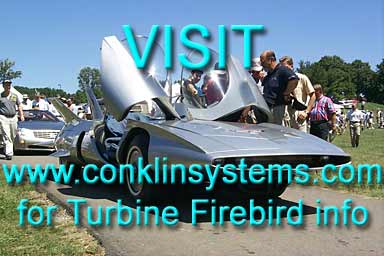
 |
Flight of the Firebirds |
![]()
The following booklet was one of a large body of publications that General Motors internal publishing group put out. In the 50's in particular, G.M. printed many small books and guides that were free to employees, from books like this to how to set up your home woodshop. G.M. really meant it when they talked about the "G.M. family."
In this case, this is book four of a four-part series, and this volume was printed in 1959. It was a large enough book that making it available as scanned images would have been impractical, so we have recreated it as a 1990's web document, keeping everything as true to the original as possible. This booklet, in particular, gives a new and unique look at what G.M. internally thought about the Firebird project.

FLIGHT OF THE FIREBIRDSAt the new General Motors Technical Center near Detroit each of the major operations - the Research Laboratories, and the Styling, Process Development and Engineering Staffs - has its own particular sphere of operation. But modern science, engineering, styling and production are so intermingled in developing a new thing, such as an original car, that close proximity and cooperation among all of these General Motors staffs are almost essential. Here the men and facilities are capable of producing a complete, operating car - from a design on a piece of paper to an automobile you or I can drive. Here dreams of tomorrow materialize and become rolling laboratories in which new ideas run the gantlet of practicality. Let's take a concrete example - the Firebirds, for instance.
|
The whole thing started as a dream back
early in 1953 - a dream on the part of Harley Earl, then
head of General Motors Styling, who visualized the
possibility of capturing the feeling of a Douglas Skyray
fighter in a new kind of road vehicle. But this was not
to be a pseudo road vehicle - just a body shell on
wheels. It was going to be a complete rolling laboratory
- body, engine and chassis, all embodying the most
advanced thinking of the Technical Center Staffs. So he
and his engineer-designer, Bob McLean, solicited the help
of the Research Laboratories and the Engineering Staff. As we have previously mentioned, Turunen and his men of Research at that time were readying a new gas turbine, the GT-300, for road tests in a coach. So, in keeping with the advanced thinking theme, it was decided to put a slimmed-down version, the GT-302, into the XP-21, as the experimental car was first called. The chassis began to take shape at Research, and the Engineering Staff contributed its ideas on a transmission and brakes. Styling, of course, was fabricating the sleek, streamlined body of fiberglass. At last, in less than a year's time, in the fall of1953, all the parts came together and the XP-21 was officially christened "Firebird I"-the first American gas turbine car. |
 Mauri Rose in Firebird I |
Mauri Rose, three-time winner of the Indianapolis "500," piloted the Firebird on its first "flight" and reported it to be a unique experience - terrific performance, coupled with absolute smoothness and reliability. As we previously reported, it had some drawbacks - an inclination to be noisy, with a hot exhaust and rather poor operating economy. But it seemed decidedly worthwhile to do more experimenting. In the next two years the GM Technical Center teams designed, built and tested, accepted and rejected, and then started all over again. In 1956 at the General Motors Motorama a new car of the future was presented to the American public - Firebird II. Out of Styling came an entirely new futuristic body made of the lightweight wonder metal of tremendous strength - titanium. Instead of the Firebird I type of test vehicle - a single-seater design limited to use on the test track - Firebird II was a four-passenger car with a transmission system,suspension, brakes, air conditioning, and overall design capable of making effective, comfortable use of gas turbine power for family transportation. |
Research installed in it an entirely new gas turbine,
the Whirlfire GT-304, incorporating a newly developed
regenerator which salvaged 80 per cent of the exhaust
heat formerly wasted. This resulted in a fuel economy
approaching that of the piston engine and at the same
time reduced the objectionable hot exhaust blast by 1,000
degrees. Also a silencer was built into the nose of the
engine which reduced the engine noise so successfully
thatit approached the average automobile engine in
quietness. In addition to providing a highly roadable, gas turbine-powered, family-size car, the de- signers decided to go a step further and incorporate some "imagineering." Looking down the road they visualized a novel, completely safe, rapid transit highway system which would take advantage of two-way radio communication with TV and "electronic brains." |
On the "dream highway" - the "Safety Autoway of Tomorrow" - the driver of Firebird II could theoretically take his hands from the steering handles and turn over control of the car to an "electronic brain" which received its signals from a metallic conductor buried in the road surface. Although this system was not operative in Firebird II, the driver's compartment was equipped with the simulated instrumentation. It sounded rather far-fetched at the time, but there were some GM Researchers who felt they could bring such a dream down to earth - at least Joe Bidwell and Roy Cataldo of the Engineering Mechanics Department were willing to try. |
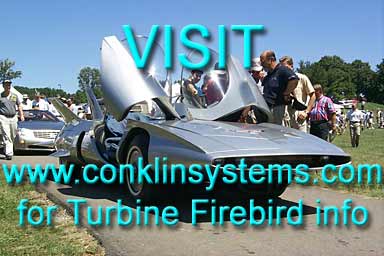 A model of the "Dream Highway of Tomorrow" |
||
| This team reasoned that
inasmuch as the modern car was already equipped with
hydraulically operated brakes and steering that
functioned quite efficiently, the thing that was needed
was an "electronic brain" that could operate
these mechanisms through servo devices. Then, instead of
twisting a steering wheel and pushing on an accelerator
or brake pedal, all the driver would have to do would be
to indicate his intentions to the electronic brain box -
something like dialing a telephone. Early in 1957, under
the supervision of Bidwell, they started experimenting
with, and perfecting, the various elements. Recalling the imaginary automatic guidance system suggested at the 1956 Motorama, they decided it might be a good idea to try out such a system on a small scale. So, after a year's experimentation, in January, 1958, they buried a length of cable on the test track at the GM Technical Center. |
 Testing Firebird II |
|
|
Then Roy rigged up a couple of probes on the
bottom of the front bumper of a test car equipped with
the automatic steering system.
A current of electricity
was sent through the guide cable on the road, the car and
the probes straddled it and the experimenting began.
Weeks later most of the "bugs" were ironed out,
and the press was invited in for a demonstration.
The next day hundreds of American papers carried articles, usually accompanied by a photograph of a girl with both hands off the steering wheel and captioned "Look!-No hands!" The article described the car as automatically following the magnetic path of the cable, the probes "sniffing" the magnetic field around the cable and sending signals back to the electronic analog computer in the car's glove box. The computer then translated these signals into "commands" to the modified steering system - all automatic and with no steering effort on the driver's part. |
To Joe Bidwell and Roy Cataldo, though, this proved
just one element of their more elaborate scheme. It
proved that a combination of electronics and hydraulics
could be made to steer a car without benefit of a
steering wheel. But could it be combined effectively with
the braking and accelerating controls - a thing they had
been working on for over a year? At last they rigged up on a test car a combination of all three and in April, 1958, put it through a series of demonstrations. The test car had no steering wheel, but located on a ledge dividing the front seat was a small knob, resembling a ping-pong ball, on top of a four-inch pencil-like rod. |
|
| The ball could be moved about two inches
in any direction and the results were startling. After
starting the engine and putting the car in
"Drive," all controlling is done by
simply manipulating the ball on the stick. You press it
straight forward from the central position and the car
accelerates in a straight line. Pull it back and the
brakes are automatically applied and the car slows down.
Move it to the left and the car turns in that direction,
to the right and it goes right. And you still have the
"feel" of the steering. Strange as it may seem,
it is an easy thing to get accustomed to - the slight
finger movement and control seem to be instinctive after
a short drive. One simple movement of the fingers takes
the place of many manipulations of arms and feet.
|
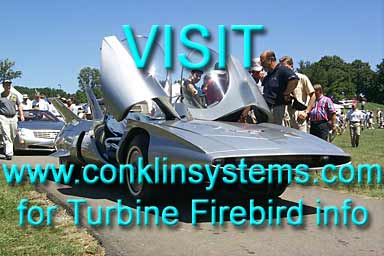 The Firebird III version of Unicontrol provides for accelerating, braking, steering and reversing by the movement of a single control. |
|
| What happens when you move the lever is not easy to explain. About the simplest way to describe the operation of the system is to say that wires are the only connection between the control stick and the steering mechanism, throttle and brakes. Sidewise motion of the control stick rotates a potentiometer, a device which varies the voltage going to an electronic computer which in turn sends the appropriate signals to the steering mechanism and turns the wheels right or left. | Similarly, a fore and aft motion of the stick operates a second potentiometer which controls the engine, throttle and the brakes. An interesting feature of the steering system is that the ratio varies with car speed. This means that a quick abrupt movement of the control while traveling at high speed will not throw the car into a skid such as might happen if you suddenly twisted the steering wheel of yuur car under the same conditions. In addition to this built-in safety feature, increased ease of parking or low-speed maneuvers is another advantage | |
 Joseph Bidwell and his associates take out the Firebird III chassis for a test spin |
The principal operating controls for the Firebird III are all combined in a single four-inch swivel stick topped by a palm-fitting handle weighing about 1.5 Pounds. The stick is pushed forward to accelerate the car, pulled back to apply the brakes, and moved left or right to turn accordingly. For "Reverse" the handle is rotated 20 degrees to the left or right, and for "Park" it is rotated 80 degrees in either direction. Having complete freedom of motion with a four-inch sweep, the stick can produce any possible combination of driving operations. | |
| While Researchers Bidwell and Cataldo were perfecting their "electronic chauffeur," down at the other end of the Technical Center lake Firebird III was taking shape in the minds and on the blackboards of the Stylists. Maintaining a close liaison with the Researchers and the Engineering Staff, Harley Earl's men envisioned an entirely different type of car "which a person may drive to the launching site of a rocket to the moon." Its uniqueness was to be enhanced by incorporating an improved version of the new Research car control system | Actually it would take the form of three interrelated sub-systems: the Unicontrol system in which steering, accelerating, and braking are performed by means of a single, simplified control stick; an Autoguide system for automatically steering the car down a road equipped with an embedded electrical cable; and a system, called Cruisecontrol, for automatically maintaining any preset road speed. Unicontrol and Cruisecontrol can be used on present-day highways since no signal from the highway is required. Autoguide is designed to operate in accordance with command information from a suitably equipped automatic road system. Supplementing Autoguide with Cruisecontrol gives a combination approaching that required for complete automatic highway control. | |
| The experimental nature ofthe Firebird III is revealed by some of the car's many unique engineering features. One of these is the dual powerplant system, consisting of the new Research Whirlfire GT-305 regenerative gas turbine engine and a separate ten-horsepower, accessory drive, aluminum engine designed and built by the Engineering Staff. The small two-cylinder engine is the workhorse of an auxiliary power system which serves all of the car's electrical and hydraulic accessories-With these loads taken care of, all of the available power from the rear-mounted GT-305 engine can be used to propel the vehicle. | The new GT-305 regenerative gas turbine in Firebird
III represents a considerable improvement over the
Firebird II GT-304 powerplant. It is 25 per cent lighter,
more compact and develops 10 per cent more power, while
at the same time the fuel economy has been improved 25
per cent. The initial flight of Firebird III at the General Motors Desert Proving Ground at Phoenix, Arizona, in August, 1958, was a dramatic demonstration of the integration of form and function in an entirely new transportation concept. |
Also, it was a perfect demonstration of the integration of the minds, hands and experiences of hundreds of General Motors scientists, engineers and technicians at the Technical Center. This is true of the building and testing of all the Firebirds. The result is a Twentieth Century saga of research and engineering - a dramatic example of what can be accomplished when many diverse talents working with the most modern facilities are given free rein. |
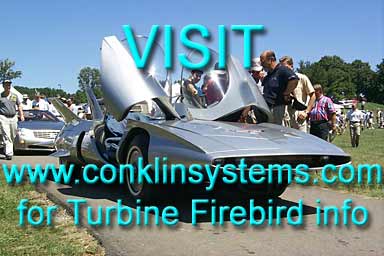 Firebirds I, II and III in flight at the GM Desert Proving Ground in Arizona |
||
Implements of Inquiry |
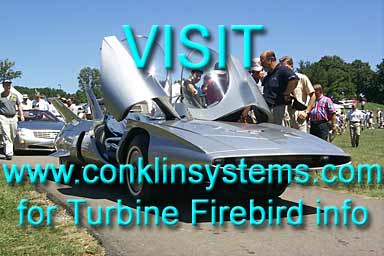 |
Did you ever stop to think that one measurement of man's progress is his ability to extend his faculties? We all know our primeval ancestor was a rather puny individual when compared to some of the other early inhabitants of the earth. But man's ability to think enabled him to harness the muscle power of certain animals and take advantage of some of the natural forces around him. As a result the horse, steam engine and internal combustion engines have multiplied his muscular efforts thousands of times. The telescope, microscope and television have extended his vision in every direction. The telephone, electronic detection and amplification have increased his ability to hear and transmit sound, and similarly he has devised instrumentation capable of measuring a millionth of an inch instead of the comparatively large fractions used by his ancestors. |
But even as recently as World War II he had not found a way to extend greatly his ability to calculate things. Engineering com- putations were either performed longhand, so to speak, or with the assistance of a slide rule or desk calculator. Consequently, faced by mountainous piles of calculations, researchers often threw in the sponge and abandoned projects, or, as an alternative, they would take short cuts and base their conclusions on incomplete data and calculations. In other words, scientific inquiry was badly handicapped by the researcher's inability to cope with some of the computing problems that were constantly arising in the course of his investigations. | And then came the computers - the digital and analog computers. The principal difference between the two is that the digital computer calculates by counting and the analog computer operates by measuring. To put it another way, digital computers operate by performing the arithmetical processes of addition, subtraction, multiplication, and division. On the other hand, an analog computer is a combination of electronic circuits which are organized so they can be wired together easily to simulate a physical system. But, to get a better idea of their usefulness, let's see how these new tools of investigation are used by the General Motors Researchers. |
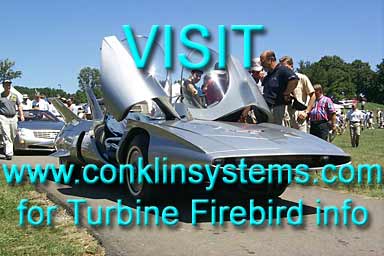 Paul Vickers and Charles Amann discuss some of the answers supplied by the digital computer |
||
| For instance, take the problem that faced
Paul Vickers and Charlcs Amann of the GM Research
Laboratories Engineering Development Department. When
Firebird III was conceived, their department was given
the job of designing and building a new gas turbine for
this radical car. It had to be compact enough to fit into
the confined space allotted to it, yet produce power
comparable to that of a current passenger car engine. In
the interests of time and expense they could not afford
to build and test several experimental engines so they
had to build "paper engines," i.e., calculate
and weigh on paper the advantages and disadvantages of
several arrangements. The new powerplant would consist of a number of components - the compressor, combustion chamber, gasifier turbine, power turbine and heat exchanger - all of which had to be examined for individual operating characteristics which would affect the operating efficiency of the complete engine. The next job was to have engineering specialists write up formulas describing the function of each of the components. After mathematical expressions for the component operations were formulated, the digital computer could solve the problem of determining the performance characteristics of engines using different components. |
The result was that
basic questions in engine design and performance were
answered during the computation.
Over 100 paper
engines were "tested" in this manner by the
computer without cutting any metal.
The gas turbine engine design analysis is an excellent illustration of the kind of problem for which the digital computer is best suited. It is an example of how a new tool can solve a tedious, time-consuming, computational problem - a problem too large even to consider doing with the desk calculator in the short time allotted. But we should remember that such a machine can basically do only the simple arithmetical problems, and make very simple decisions. As Vickers and Amann put it, "It cannot think; it cannot create. These things must be done by the researchers. But this modern scientific tool does give the investigators more time for thinking and creating without being handicapped by tedious computing jobs." |
Very briefly this is one way in which a digital computer can assist the engineer. On the other hand, the analog computer contributes in another way. Joseph Bidwell, the Research expert on car control, gave us a good illustration of the part played by this new scientific tool in one of his recent investigations. |
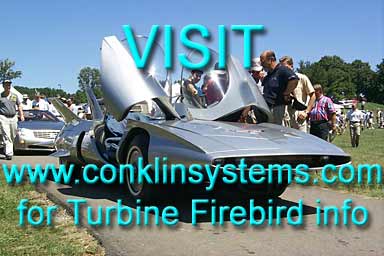 The digital computer room is a busy place |
||
| "One of the engineer's problems," Joe told us, "is to obtain information on car operation without going into extended, time-consuming road tests involving elaborate instrumentation and physical changes to complete cars. For instance, we wanted to know how changes in such things as a car's weight distribution, steering gear ratio, tire properties and suspension would affect its stability and control. So we hit upon a technique used by aircraft designers. You know they use a computer-simulator combination which enables them to "fly" synthetic airplanes mathematically. From their computations, aircraft designers can predict how control systems will function before the airplane reaches the blueprint stage. The same general type of information can be computed for an automotive steering and control system before it reaches the early design stage. |
"Here is how we used an analog computer to give us the results quickly. You know when you are driving down a highway and twist the steering wheel suddenly in one direction, the car may yaw and roll or sideslip with the amplitude and phase of these variables depending on the steering gear, weight distribution and about twenty other physical properties of the tires or suspension. We have developed equations which describe mathematically how the car will act when the driver is steering straight ahead, veers to pass a car, rounds a curve, etc. "Our computer-simulator device consists of an analog computer which continuously solves the equations I have just mentioned for any input to the steering wheel attached to it. Adjustment of controls on the computer permits changes in all of the car and tire characteristics. It can thus represent cars of different wheelbases, different weight distribution and suspension properties. |
"The other part of our device is the simulator, which consists of a miniature car controlled by servo mechanisms which receive their signals from the adjacent analog computer. The little car responds to various steering "inputs" at the wheel, just as a full-size vehicle would respond to driver motions at the business end of the steering gear. In other words, our automobile steering computer gives engineers an immediate visual idea how a fullsize automobile will conduct itself on the road when the driver twists the wheel. So, you see, we might say we have brought our elaborate test roads and instrumented cars into our little laboratory here." |
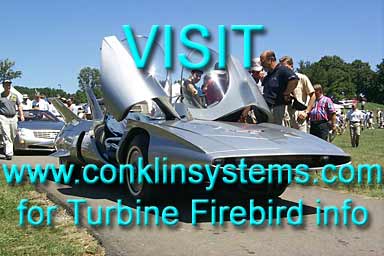 Patricia Jackson under the direction of Robert Kohr puts the miniature car on the right through its paces by means of the analog steering computer. |
||
| As we have seen in a previous chapter, one of the problems that has been with the GM Researchers for over 30 years is that of studying the mechanism of friction and wear and what can be done to minimize these things. Obviously, accurate measurement of wear is the sine qua non of such investigations. But how do you measure wear on a metal part for instance? | First attempts to assess the effect of wear on
machine parts necessarily were made with the instruments
at hand at the time - micrometers and precision scales.
They are still used. In addition the effects of wear can
be seen by visual examination using a microscope. But if
we are testing a well-designed and built engine, it may
have to operate hundreds of hours before sufficient wear
occurs to be weighed and measured. Consequently, the big
disadvantages of the stop-and-measure method are that it
is slow, the test must be interrupted to gather data, and
reassembly of the working parts exactly as they were is
difficult, if not impossible. Another method of measuring wear was developed more recently in connection with a study of the effect of lubricants on the rate of wear. Chemical analysis of the used oil detects the presence of various metals worn from the moving parts of |
the engine. This eliminates dismantling the engine, and
wear figures can be obtained in a fifth the time required
by the previous method. However, fifty to one hundred
hours of operation are still required before wear can be
measured and you can't pinpoint the wear of a given part.
Moreover, there is an unavoidable delay in obtaining the
chemical analysis for the various metal wear products in
the oil.
Now, a new measuring tool has been placed in the hands of the Researchers. It uses radiation, an offshoot of the atomic age, as a basis for tracing and measuring ultramicroscopic particles. The method is based on the fact that many materials can be irradiated by exposure in atomic piles. This is something like putting a cold bar of iron into a furnace and heating it white hot. |
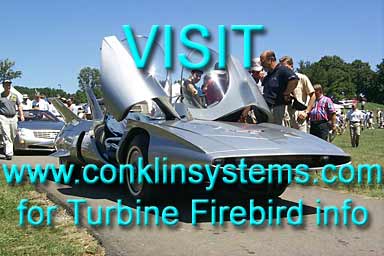 Dr. Alex Somerville in a familiar position at a glove box studying some of the properties of a radioisotope. |
||
| When it is removed from the furnace it
will itself be a radiator of heat waves. A thermometer,
of course, can measure the temperature difference between
a cold and hot iron bar. Substances like gold, iron,
copper, cobalt, chromium and tin can be made
"hot" in an atomic pile. They are then said to
be radioactive, or to contain radioisotopes. Although
they remain cold to a thermometer, their radiation can be
detected by other devices such as the Geiger-Muller
counter, or G-M tube. Like the hot bar of iron, these
radioactive metals also lose their radioactivity or
become "cool" with time. Radioisotopes of
different metals lose this radioactivity at different
rates. This rate of decay is expressed as the "half
life" of an isotope, as, for instance, radioactive
iron which loses half its intensity every forty-five
days. Radioactive measurements of wear are hundreds of times more sensitive than any other. Change in wear occurring in a few minutes can often be accurately recorded. Measurements as minute as a tenth of a millionth of an inch or less can often be detected. The wear of individual parts can be measured without dismantling the machine, and not only that but the Researcher can tell when and where the greatest amount of wear is taking place. |
 Charles Gambill of Frigidaire uses remote controls in his investigation of compressor vane wear. |
|
| But let's take as an illustration an actual test that
took place - in this case, a study of the effect of three
different oils on the wear of the vanes in a Frigidaire
compressor. Charles Gambill of Frigidaire, with the assistance of Dr. Alex Somerville and his associates of the Isotope Laboratory at the GM Research Laboratories, made a test setup to evaluate the comparative lubricity of three oils in the compressor. Inasmuch as the com- pressor vanes are about 98 per cent iron, a radioactive iron isotope Fe59 having a half life of 45 days was chosen as the wear indicator. |
Regular production vanes were then irradiated in a manner so as not to change their physical properties and were installed in the test compressors. Because of the radioactivity, the compressor and refrigeration system were enclosed in a shielded "glove box" as a safety precaution. Small samples of vanes similar to the test parts were also irradiated and later dissolved to prepare standards for determining the total activity per vane - a kind of radiation yardstick. The six compressor units, two for each oil to be tested, were started, and at intervals oil samples were drawn from each one. | |
| The radioactive wear particles in the oil were easily detected and counted by a setup consisting of a scintillation crystal, a photomultiplier tube, amplifiers and a mechanical register. By comparing the count of the wear particles in the oil with the total count registered by the irradiated vane standard, it was a simple matter to compute the weight of the wear particles in the oil. Not only did this technique expedite the testing, but it was also extremely sensitive and accurate; in fact, it was capable of measuring wear particles weighing as little as a fraction of a millionth of a gram! | These tools of Research we have described - the digital computer, the analog computer and the use of radioisotopes as a measuring device - are just three examples of the sophisticated approach modern investigators must take to unravel the complications attendant to modern scientific progress. | In the GM Research Laboratories are hundreds of
unique devices designed to measure the hitherto
unmeasurable, to see things formerly invisible, to hear
sounds unheard by the ear, and to detect infinitesimal
vibrations. As we probe deeper and deeper into Nature's
mysteries, we are constantly discovering our old tools
and methods to be inadequate, so in a way, our future
progress is going to depend to a large extent on our
ability to continuously invent new implements of inquiry.
|
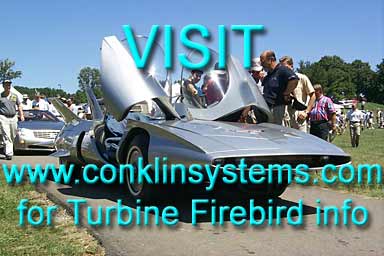 |
||
And so we come to the end of our very brief behind-the-scenes visit to the General Motors Research Laboratories at the GM Technical Center. We have met a few of the Researchers and gained an insight into the projects that occupy them at the moment. We want to emphasize "at the moment," because there is no doubt that by the time this booklet comes off the press many new problems will have arisen to occupy the minds and hands of many of them. That is the fascinating thing about scientific inquiry and engineering development - there are always new fertile fields for investigation stretching out in every direction. But this is where management comes info the |
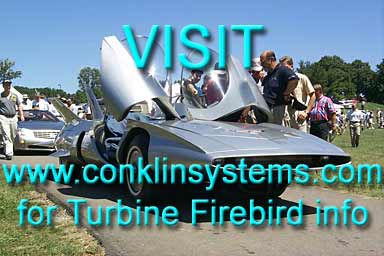 The atomic-powered U.S.S. Nautilus, the first submarine to make a submerged journey under the polar ice cap. |
|
|
picture, and up to this time we haven't said too much
about the most important role played by those in GM
Research who guide the efforts of some 1,400 scientists,
engineers and supporting cast.
Theirs is a great
responsibility, comparable to that of commanding officers
mapping a military campaign. What are the objectives?
Where will they send their task forces, and what will be
the tactical approach?
Upon the decisions of such men as these in industrial research organizations across the nation hang to a great extent the future of American industry, the pattern of our world of tomorrow and, indeed, the safety of our nation. Surrounded by untapped fields of knowledge, by use of wisdom and foresight they must apply the skills and facilities at their command to those areas which promise the greatest rewards in the form of new knowledge and the undreamed of things that can improve our daily living by making it more convenient, healthier, and more enjoyable |
The preceding chapters have given some clues as to the areas upon which GM Research's efforts are focused - a better understanding of some of the phenomena of nature, more efficient harnessing of our energy sources, and new and better materials, to mention a few. But ours is only one of thousands of research organizations in this country - a national research and development effort that involves over three-quarters of a million people and annually spends around ten billion dollars! Only thirty years ago fewer than one hundred thousand researchers were spending less than a quarter of a billion annually. | |
This increase in itself is symptomatic of a change in national thinking. World-wide events have thrown the spotlight on science and engineering. New words have crept into our vocabulary - words such as "fission" and "fusion," "radioisotope," "transistor," "computer" and "stereophonic" have now become a part of our everyday language. Earlier we mentioned that the pace of discovery and development is constantly accelerating. It hasn't been many years since Buck Rogers'adventures in space were confined to the comic strips. But today we have man-made satellites orbiting the earth and rocket contact with the moon is only months, instead of decades, distant. We have made a submerged journey under the ice at the North Pole in an atomic-powered submarine and a jet airliner will now take us from New York to Paris in less than seven hours! |
This is a terrific pace to maintain, much less to accelerate. Yet accelerate we must if we are to retain our position of leadership in world progress. We have mentioned on several occasions the effective use made by modern research of "teams" of investigators, or "task forces," and implied that this technique has been responsible for significant reductions in discovery and development time. Granting this to be true, to do an even more effective job we must constantly improve the quality and quantity ofthese investigating teams. We must leave no potential scientist undiscovered nor latent engineering talent undeveloped. In these hands will be placed countless opportunities and rich rewards, not only for themselves, but for our future civilization. | At the General Motors Research Laboratories we have gone to great lengths to provide our scientists and engineers with the world's most up-to-date facilities and equipment. Here in a campus-like atmosphere they may give free rein to their intelligence and skills. Here no limits are placed on imagination or creativity. Our undergraduate summer student and college graduate-in-training programs offer young men unexcelled opportunities to develop creative techniques by working with experienced scientists and engineers, thus materially broadening their education and experience. |
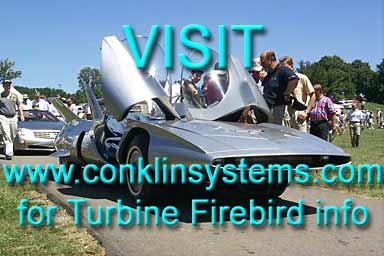 College graduates-in-training discuss their future assignments |
||
 Gifford Scott collecting data in the large Helmholtz coils which cancel out the Earth's magnetic field. |
Who knows what adventures lie ahead of these
inquiring minds? Yesterday's explorers uncovered some of
the secrets of electromotive force, powered flight, and
electronic communication. In the preceding pages we have
discussed some of the problems that occupy the minds and
hands of our researchers today, but let us take a look a
little farther down the road. For instance our research
in vehicle dynamics and traffic systems analysis could
result in entirely new concepts of automotive
transportation. Our semi-conductor studies are opening up
hitherto unimagined possibilities, as are our experiments
with improved methods of directly converting chemical and
nuclear energy to electrical and mechanical applications.
And we should mention Research explorations into the
possible applications of atomic power in spaceships. So today's researchers are unraveling the atom, probing into the crystal and venturing into space. Tomorrow's adventurers will apply this accumulated knowledge and uncover more to disclose the answers to some of the age-old questions that have puzzled mankind What is photosynthesis and how can we use the sun's energy more effectively? What kind of place is the moon, or Mars? How can we utilize the inherent strength of pure metals? Can we cure cancer, the common cold and minimize heart failure? There must be better sources of power than we have today - What are they? |
This is research. This is the way we try to find
some of the answers to "Why?" and
"How?" Nearly forty years ago, we in General
Motors embarked in a systematic way on this course by
establishing the first research organization in the
automotive industry. We have found many answers and the
American people have directly benefited therefrom. But
that is history and although we are proud of our past
contributions we are firmly convinced that our men, our
facilities, and our experience will lead us forward to
things undreamed of today.
The Future is Our Assignment! |
Some important developments in which the General Motors Research Laboratories participated:
Automotlve Engines
Diesel Engines
Vehicular Gas Turbines
Free Piston Machines
Bearings
|
Fuels
Lubrication
Metallurgy
Finishes
|
Instrumentation
Physics
Automotive Components and Controls
Mechanical Refrigeration
Medical
|
PUBLISHED FOR GM MEN AND WOMEN
Information Rack Service
General Motors Personnel Staff
Questions or comments? Send them to
info2@conklinsystems.com
Conklin Systems 9905 Barnes Hwy
9905 Barnes Hwy Eaton Rapids, MI 48827
Eaton Rapids, MI 48827
Phone (517) 663-6418 Fax (517) 664-5802
Fax (517) 664-5802